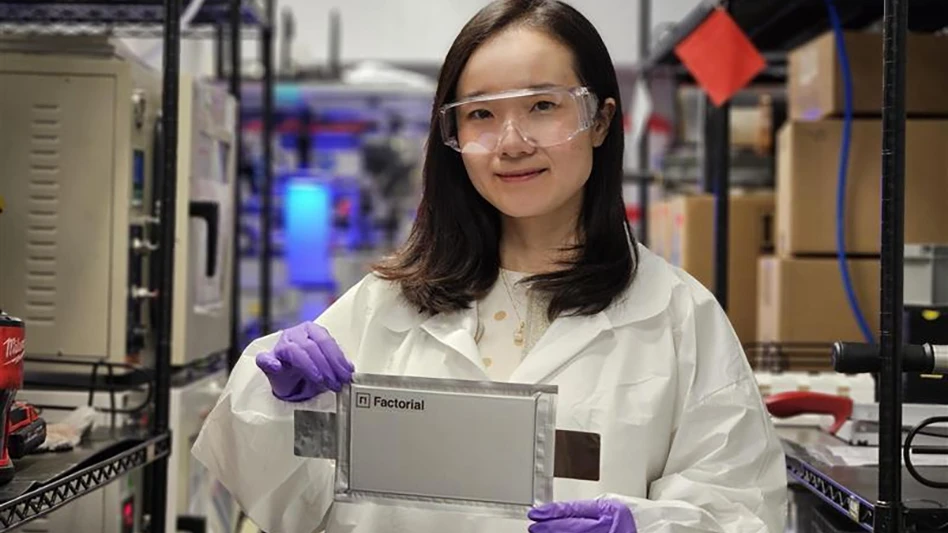
Freudenberg Sealing Technologies
In lithium-ion batteries, higher energy density increases the risk of thermal runaway. As a preventive measure, Freudenberg Sealing Technologies has developed thermal barriers helping to slow down thermal runaway by increasing resistance to propagation. The new 3D thermal barriers can be used at various positions within the battery and have already proven reliable in their initial series productions.
More than 100 million electric cars are expected to be on roads worldwide by 2030. To make electromobility more efficient in the future, many manufacturers are working on achieving higher ranges and shorter charging times. That is why high-performance batteries are one of the priorities in this development. But in lithium-ion batteries, higher energy density increases the risk of thermal runaway. For that technical environment, Freudenberg Sealing Technologies has developed thermal barriers. These slow down or even stop thermal runaway by increasing thermal propagation resistance.
“What’s completely new is thermal barriers are now also available in customized, flexible 3D geometries, which makes it possible to use them in various positions within the battery and allows for integration of additional components,” says Andrew Espinoza, Global Vice President Technology of the Oil Seals Powertrain & Driveline Division at Freudenberg Sealing Technologies.
Thermal runaway, which is the ignition or explosion of a battery cell caused by a self-reinforcing heating process, is a significant safety problem. It can be caused by a range of internal and external factors, such as overcharging, excessive discharging, damage, or heating of the battery. Thermal runaway releases not only flames and hot gases but also electrically conductive particles. These in turn can cause thermal propagation in adjacent cells and lead to short circuits in the electrical system. Thermal barriers act as protective layers that slow down or even prevent the heat and flames from spreading in the battery, which significantly increases safety.

Entirely new possibilities
Beyond the existing two-dimensional barriers, such as flat mats and thermal blankets, the 3D variant opens entirely new possibilities. Customer-specific, three-dimensional geometries can be produced in a variety of high and low volume manufacturing processes, such as injection molding and continuous extrusion. Profile seals, module separators and covers, including those for bus bars, cooling lines or electrical components are a few of the products currently being produced. Another advantage: The manufactured, complex 3D geometries are lightweight and have minimal impact on the battery’s overall weight.
Specifically for these applications, materials experts at Freudenberg Sealing Technologies have developed heat-resistant, electrical, and thermal insulating materials. Testing of these materials has been completed in-house, proving that they can safely withstand temperatures of up to 1,200 °C. It is their special composition that makes these compounded polymers so extremely heat-resistant. It also makes them resistant to particle impacts, such as those that occur when cells are vented. The 3D thermal barriers utilize elastomer solutions, whether in solid form or as a foam, as well as plastic components such as Quantix Ultra, which enables complex geometries.
Extensive testing
“The three-dimensional thermal barriers and the utilized materials have gone through extensive testing that exceeds the required standards,” says Andrew Espinoza. “They have proven their outstanding performance and reliability on bench tests as well as battery system testing. The products meet the highest quality standards, are certified pursuant to UL 94 V-0 and are already being used successfully in initial series production for the automotive industry.”
With their 3D thermal barriers, Freudenberg Sealing Technologies has rolled out an innovative product that increases the safety of electric cars and lowers the risk of thermal propagation in future battery systems. As a partner of the automotive industry, Freudenberg merges market-specific know-how with unique expertise in materials, technology, and development, thus playing a leading role in the development of electromobility.
Latest from EV Design & Manufacturing
- Hundreds of ultra-fast electric vehicle charging ports to be installed across United States
- Hyundai Mobis introduces electric vehicle battery cooling technology
- Wide-creepage option now available for integrated circuits
- New study delivers promising news for future electric vehicle battery manufacturing
- Technology promises to make shrink fit holder processing easier, safer
- Latest Battery Workforce Challenge partner introduces recyclability into competition
- LK Metrology lowers carbon footprint of machines
- Zinc-sulfur batteries: another alternative to lithium-ion?





